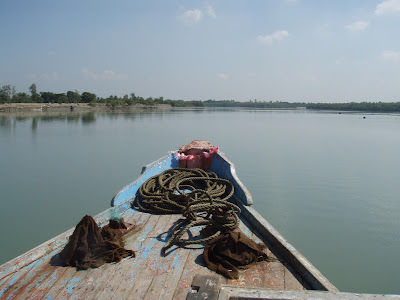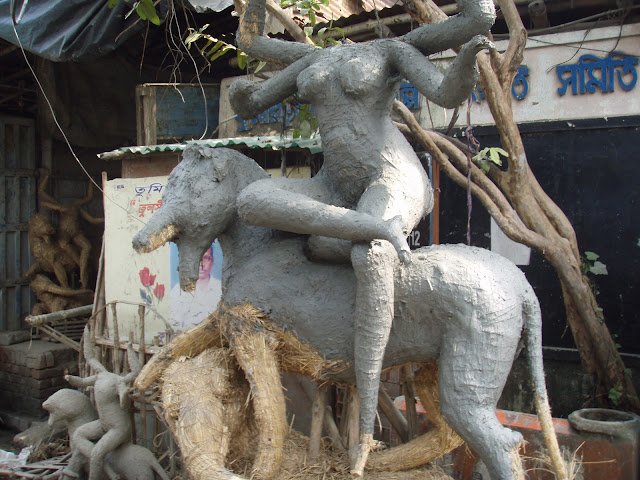The trip ran away with me in the end. We reached Goa - former hippy colony in the 70s, former Portuguese colony much earlier. It was the end of a long road across India and back not to mention Nepal and Bhutan. It was, as I had been warned, a different Goa to the one I had read about. Russians and "their nieces" (all very good looking, funnily enough . . . ). I have met many Russians in my time and they were all perfectly nice - but this brand was loud, and brash, and brandishing tattoos. Hmmm.
Concluding our group trip, we escaped to southern Goa for a few days pampering in a property recommended by a friend of a friend. Wonderful. A beautiful beach nearby provided perfect R&R (including a 25 mile stretch for running - no, I did not do a marathon but a long run proved very relaxing).
Back in Ireland now and I have been reflecting on how people inquire about the break. Responding to the entreaty "DO, tell all about your holiday" usually commands the attention (even with the most engaging storytelling) for, at most, 2 minutes. (Might start a separate blog to explore the implications of that!)
Anyway, in less than 2 minutes, the highs and lows:
Highs
- meeting the Boss after 7 weeks' away
- the Taj (just unbeatable)
- Sister Cyril in Loreto Sealdah
- Himalayas (breathtaking)
- the food (especially the cookery course, Bhutanese chilies and so much more)
- the people (especially the cheerfulness of the kids - even in the worst of circumstances)
- the variety (weather, food, activities, monuments, religions, people, transportation, stories. . . )
- the hope (and real change) brought by NGOs to so many
Lows
- the poverty (especially the lack of any chance of any education for so many)
- corruption at all levels
- rubbish and dirt - everywhere
- Indian trains (sorry! great system but grisly conditions)
- roads
- the scarcity of Indian Tonic for that most wonderful of sundowners a Gin and Tonic. . .
If you are in any doubt about trying India, just do it! You won't regret the great adventure that is India.
Concluding our group trip, we escaped to southern Goa for a few days pampering in a property recommended by a friend of a friend. Wonderful. A beautiful beach nearby provided perfect R&R (including a 25 mile stretch for running - no, I did not do a marathon but a long run proved very relaxing).
Back in Ireland now and I have been reflecting on how people inquire about the break. Responding to the entreaty "DO, tell all about your holiday" usually commands the attention (even with the most engaging storytelling) for, at most, 2 minutes. (Might start a separate blog to explore the implications of that!)
Anyway, in less than 2 minutes, the highs and lows:
Highs
- meeting the Boss after 7 weeks' away
- the Taj (just unbeatable)
- Sister Cyril in Loreto Sealdah
- Himalayas (breathtaking)
- the food (especially the cookery course, Bhutanese chilies and so much more)
- the people (especially the cheerfulness of the kids - even in the worst of circumstances)
- the variety (weather, food, activities, monuments, religions, people, transportation, stories. . . )
- the hope (and real change) brought by NGOs to so many
Lows
- the poverty (especially the lack of any chance of any education for so many)
- corruption at all levels
- rubbish and dirt - everywhere
- Indian trains (sorry! great system but grisly conditions)
- roads
- the scarcity of Indian Tonic for that most wonderful of sundowners a Gin and Tonic. . .
If you are in any doubt about trying India, just do it! You won't regret the great adventure that is India.
























































